2015 Ford F-150 2.7L EcoBoost Vs Ram 1500 EcoDiesel

Strict fuel economy regulations are forcing automakers to make big changes, and some of the biggest have come to pickup trucks.
These typically thirsty workhorses are being taught to be more efficient and each automaker is taking a different approach at addressing the problem.
Ram went the diesel route, opting for a 3.0-liter unit, hooked up to an eight-speed transmission, the latter of which is available with all of this truck’s engines. With four-wheel drive, the 2015 Ram 1500 EcoDiesel is rated to return a combined average of 22 mpg while getting 19 mpg city and 27 on the highway.
Get the Flash Player to see this player.
Ford, on the other hand, answered the fuel economy question with EcoBoost, which has been Ford’s answer for just about every question in the past few years. The 2015 F-150 now sports a 2.7-liter turbocharged V6 to help it save gas. And as you’ve probably heard, it also has an all-aluminum body, helping it shed weight to cut down on fuel used.
That brings the official rating to 20 mpg combined for this rig, breaking down to 18 mpg city and 23 mpg highway.
The trucks take two very different approaches and drive very differently, but which one delivers the most savings while still being a hard worker?
Heavy vs Light
The first and most staunch difference you’ll notice is that the Ram drives heavy and the F-150 drives light. The Ram is a whopping 750 lbs heavier than the F-150, with a curb weight of 5,611 lbs compared to the F-150’s 4,806 lbs. But I’m not just talking about the actual pounds here. The steering is heavy, the steering wheel is big and thick, and the hood bulges and makes the nose feel like it’s far away from the low driving position.
If the sensation of driving a big rig is what you’re looking for, then the Ram 1500 will deliver.
Diesel rumble is definitely pronounced in this truck, but it sounds good and isn’t so loud as to be grating, at least to me, a guy who loves a good ol’ diesel rumble.
On the opposite end of the driving spectrum, we have the new F-150. Steering inputs take no effort at all, thanks to a light setup, complemented by suspension that makes this truck fairly nimble in the corners. Unlike the Ram that likes to push wide through every corner, the F-150 actually feels like it tucks in nicely and wants you to turn it further into the apex.
Ford’s new 2.7-liter EcoBoost is a great little motor for this truck, too. Off the line, the truck takes off and pulls right through to 6,000 rpm, feeling way more powerful than its numbers suggest.
How Do They Tow?
I hitched just under 5,000 lbs worth of trailer to the back of each truck after cruising empty, just to make sure these machines knew what an honest day’s work was like.
While this didn’t have either truck flinching, some of the differences became a little more pronounced.
The heavy-set nature of the Ram keeps the truck rooted to the ground like an oak tree, while the F-150’s light nature makes it feel more like a sapling in the wind. The Ford’s steering is easy to use and isn’t so bad as to make the truck feel dangerous, but the Ram’s more direct, heavy setup feels better when hauling weight. It communicates more to the driver, while the F-150’s wheel keeps you fairly isolated.
Ride quality is also better in the Ram, most of which can probably be attributed to the four-corner air suspension that also acts as an equalizing hitch because it is self leveling. When the back end lifts up, it helps to spread the weight around all four wheels.
Let me reiterate that neither truck felt sketchy, as each was well below its posted towing limit. The F-150, however, was definitely more unsettled than the Ram and the Ram made me feel more confident.
Trucks Built to Work
While I am an unabashed fan of the Ram’s interior, and its overall look, I have to give credit to Ford for coming up with a very functional layout. While I still think the Ram has more style, the F-150 definitely packs in the features.
It’s these small features that make the F-150 such a great truck to work with, day in and day out, because each one saves you time and effort, important aspects of working with your truck every day. This is especially true if you’re in business for yourself, where time really is money.
The trailer light check system makes towing a breeze, the spotlights on the mirrors come in handy in the dark, and the bed step on the back is still the best in the business. It has been made even easier to use on the 2015 truck, too. Ram hasn’t caught on to this trend yet, offering no step whatsoever.
Out back, Ford’s new BoxLink system is a genius way to allow bed customization, offering a number of accessories that can be easily slotted into the open receptacles once the tie-down cleat is removed. In-bed LED lights are also available on the truck, controlled by a rubber button mounted in the box, another simple solution that makes this truck a working man’s best friend — you save time by not having to go back to the cabin to find the light switch.
A massive flat loading floor in the F-150 also makes things incredibly convenient. Ram came up with a solution to this problem by installing flat panels that fold out to create a flat floor, but they don’t feel very sturdy. It also adds an extra obstacle to deal with if you’re loading things into the back seat.
More than any other half-ton truck, this F-150 will save you time and hassle thanks to its very smart, work-oriented features.
Compare Specs
| Vehicle | 2015 Ram 1500 EcoDiesel | Advantage | 2015 Ford F-150 2.7L EcoBoost |
|---|---|---|---|
| Engine | 3.0-liter V6 Diesel | - | 2.7-liter Turbocharged V6 |
| Horsepower | 240 hp | F-150 | 325 hp |
| Torque | 420 lb-ft | 1500 | 375 lb-ft |
| Weight | 5611 lbs. | F-150 | 4,860 lbs. |
| Max Towing Capacity (of engine tested)* | 9,200 lbs. | 1500 | 8,200 |
| Max Payload (of engine tested)* | 1,610 lbs. | F-150 | 2,160 lbs. |
| Rear legroom | 40.3 inches | F-150 | 43.6 inches |
| Fuel Economy | 19 mpg city, 27 mpg hwy | Ram | 18 mpg city, 23 mpg hwy |
| Starting Price (with engines tested) | $32,935 | F-150 | $31,470 |
| As Tested Price | $55,000 | F-150 | $51,000 |
| *when properly equipped |
Eco vs Eco
Let’s get to the most important part of the story: fuel economy. I took both trucks on an identical drive loop, with and without the trailer to figure out their real-world fuel economy.
When running empty over a roughly 40-mile loop that consisted of country roads with plenty of stop signs, I managed an 18 mpg average in the F-150, while getting a pretty impressive 26 mpg in the EcoDiesel.
Those numbers by themselves tell you a big part of the story, but it’s also worth mentioning that the EcoDiesel returns stellar fuel numbers without even trying, while the F-150 needs some coaxing and babying to make sure it doesn’t consume too much gas.
Cruising on the highway, we saw the EcoBoost deliver up to 24 mpg, while the Ram would sit around 29 mpg.
The trailer loop was too short to get an accurate fuel economy representation (about 15 miles with a lot of stopping and starting), but it’s still interesting to note that the F-150 returned 8 mpg while the Ram managed 11 mpg.
Pricing and Value
Now we know that the Ram will save you more money at the pump, but is it worth it to buy?
As our F-150 sits, it costs just about $51,000. But the real story is that the 2.7L EcoBoost is only a $795 option.
On the other side, our Ram EcoDiesel is worth nearly $55,000. Keep in mind that the EcoDiesel is a $4,500 option, which means that without it, these trucks would be similarly priced.
The average price of gasoline and diesel is nearly equal right now in some parts of the United States. As of July 20, gasoline costs an average of $2.802 per gallon, while diesel costs $2.782.
Using my observed fuel economy of 26 mpg in the diesel and 18 mpg in the F-150, you’re looking at paying about $700 more every year to run the Ford.
The cost of DEF for the diesel should also be considered. If you’re buying DEF for about $3 a gallon, which is available at many truck stops, and you fill up every 10,000 miles, you’re only looking at about $36 every 15,000 miles. If you’re buying DEF in jugs or containers, you might be paying up to $6 a gallon, doubling that 15,000 mile number to $72. Still, not enough to break the bank.
SEE ALSO: Diesel Total Cost of Ownership Bests Gasoline Vehicles: Study
You can’t count on gas prices staying the same, but what you can count on is that this diesel engine will continue to offer fuel efficiency, mile after mile.
The Verdict: 2015 Ford F-150 2.7L EcoBoost vs Ram 1500 EcoDiesel
The new F-150 has many helpful, usable features that make it an ideal work partner. But when it comes to the big stuff, namely driving dynamics and fuel economy, it can’t match up to the 2015 Ram EcoDiesel.

Stephen covers all of the day-to-day events of the industry as the News Editor at AutoGuide, along with being the AG truck expert. His truck knowledge comes from working long days on the woodlot with pickups and driving straight trucks professionally. When not at his desk, Steve can be found playing his bass or riding his snowmobile or Sea-Doo. Find Stephen on <A title="@Selmer07 on Twitter" href="http://www.twitter.com/selmer07">Twitter</A> and <A title="Stephen on Google+" href="http://plus.google.com/117833131531784822251?rel=author">Google+</A>
More by Stephen Elmer



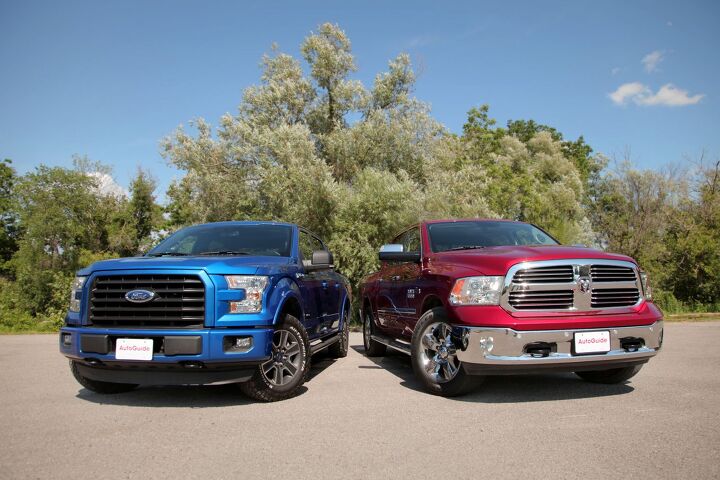
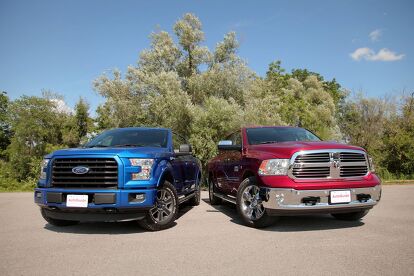


























































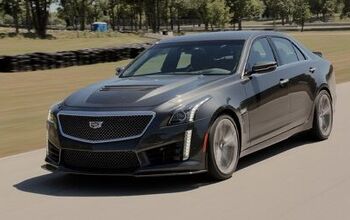
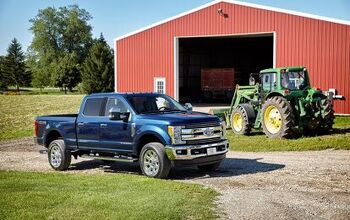
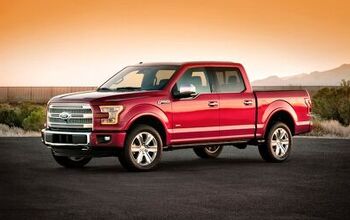


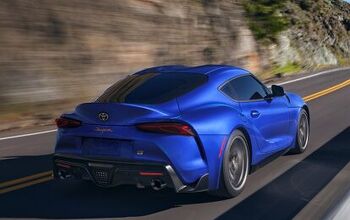

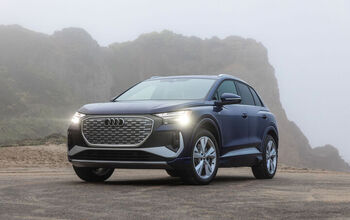







Comments
Join the conversation
I have a question for the commenters here. I live in North Carolina, and almost all gasoline sold in this State has a minimum of ten-percent methanol included. How will the 2.7 Liter engine handle that. It is not listed as a flex-fuel capable engine? Thank you all for any replies.
It really does come down to preference and you should buy what YOU want. Its your money. I will say the Diesel engines typically last much longer than gas engines and that should be factored into long term thought. Unless you get something new every few years.